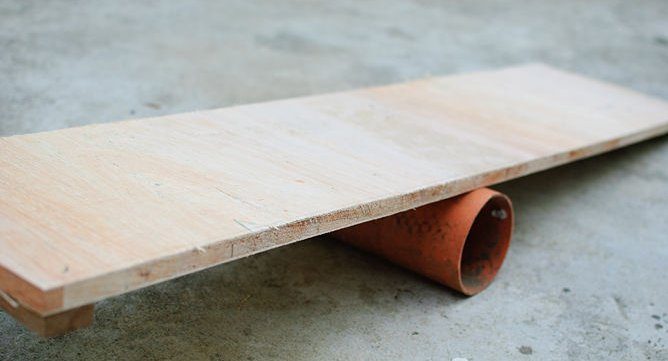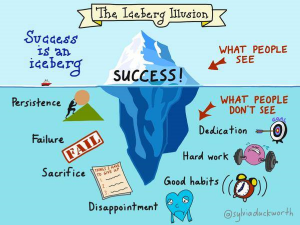IMPROVING YOUR BALANCE
How to Improve Balance
Improving your balance takes time and practice and it doesn’t just happen overnight.
However, with consistent practice, you should be able to improve your balance over time. Don’t give up practicing and trying to find your balance because if you give up hope then you will not find your balance… and so the circle goes on.
 Understand how balance works. When in perfect balance, your centre of gravity will be exactly above the point where your feet touch the ground (or if there are multiple such points ie two feet, then between them).
Understand how balance works. When in perfect balance, your centre of gravity will be exactly above the point where your feet touch the ground (or if there are multiple such points ie two feet, then between them).
The human body being as it is, it is impossible to remain exactly like this for long; deviations from this ideal stance will soon appear, and grow quickly (in other words, you’ll start wobbling). In order to keep your balance, you need to know when this happens as soon as possible; the deviations are easy to correct when you notice them on time, but when you notice them too late, it’ll become too difficult to return to a balanced position and you’ll fall ove
Learn how to feel your vestibular system better.  This is a mechanism in your inner ear that tells you when you start wobbling, and how much and in which direction, and is your main tool in balancing. Becoming more sensitive to it will improve your balance greatly
This is a mechanism in your inner ear that tells you when you start wobbling, and how much and in which direction, and is your main tool in balancing. Becoming more sensitive to it will improve your balance greatly
Take time out everyday to practice balancing.
- To practice the feeling alone, you can start by just standing with both feet on the ground and your eyes closed, and listening to your body. Feel how it sways slightly and corrects your stance all the time. The feeling will be most noticeable when your feet are close together. This is a good way to get to know the sensations of the vestibular system, and a good exercise to refine this sense. There will be little to no risk of falling over with this exercise, but since the feelings are rather subtle, it will require some patience and concentration.
- For a more practically applied exercise, try balancing on one leg for, say, half a minute. If you feel wobbly, try bending the leg slightly at the knee.
Keeping your gaze focused on something stationary when balancing makes it easier to keep yourself stable, as this enables you to see when you are moving compared to the thing you’re looking at. How useful this visual input is depends on the distance of what you’re looking at.
- If you look at something near you when balancing, you will easily notice when you move even slightly, and adjust your stance unconsciously. If you look at something further away, like the horizon, subtle movements will become much more difficult or even impossible to see. The peripheral vision is also used for balancing reference, though, so you will only be completely devoid of visual help when your entire field of vision is filled with things distant. (Or when your eyes are shut.)
- You can use this fact to train your vestibular system gradually; try looking at something close by first, and when you notice you can easily remain stable that way, try looking at something further away. Continue directing your gaze further away as you progress.
- When you get better, try closing your eyes or wearing a blindfold during these exercises; without visual input, you will be forced to sense which way you are leaning by means of only your vestibular system.
- To develop your sense of balance even further, repeat the above steps when standing on various immovable things the top surface of which is smaller or more narrow than the sole of your foot, instead of on one leg. Look for things to stand on everywhere around you; narrow ridges, sidewalk posts, rails on fences, the back of a bench in the park, et cetera. The smaller the surface of contact between your foot and the thing you’re standing on, the more difficult it will be.
By lack of any such objects, you can also try standing on just the outside, ball or heel of one foot, instead of on the whole sole. You might find that such stances make your foot ache, though.
BALANCE TIPS
Improve your stomach muscles. Ballerinas have incredibly strong abs because engaging the stomach muscles improves the balance. Do things such as crunches/reverse crunches (sit-ups work the hip flexors, and are hard on the lower back, so avoid them) and you should notice an improvement to your balance.
Take up a sport that requires balance, such as martial arts, horseback riding, skateboarding, yoga, ballet, jazz, hip-hop, or cheerleading. Not only will you get to practice your balance, it will be fun!
 Another VERY amusing way to improve balance is to make a simple balance board.
Another VERY amusing way to improve balance is to make a simple balance board.
Almost made from scrap….this gets the body going in no time. Enjoy

